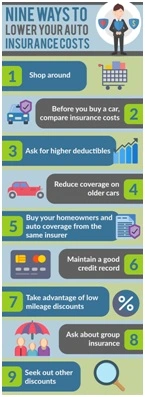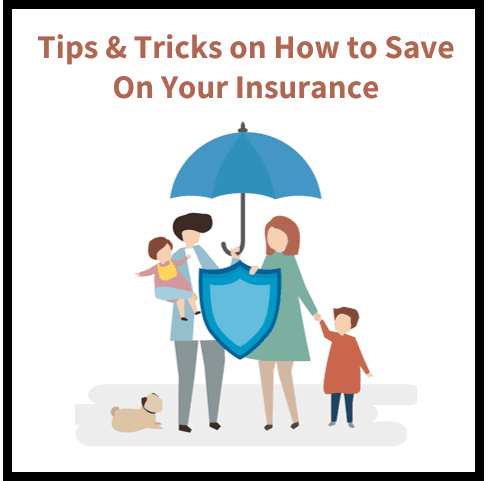Does your insurance cost keep going up each year? It’s probably not a good idea to let it. But according to statistics, Americans are spending more and more on their personal insurance every year. That’s because the cost of homeowner, auto, and liability coverage has been steadily rising over the past few decades.
If you’re reading this, you probably live in an expensive city like New York or Los Angeles – two places with high property taxes and expensive real estate. And while those two factors may be related, they’re also major contributors to why so many people live paycheck to paycheck in these cities. Add in other expensive expenses such as property taxes, income taxes, and student loan repayments – and it’s no wonder that having good insurance is become even more essential for American families.
That’s why we created Best Cost-Effective Insurance Guide to help you save money on your insurance bill every year! We consulted with industry experts to bring you the top cost-effective policies that will keep your wallet happy this winter season (and beyond).
What is cost-effective insurance?
Cost-effective insurance is insurance that meets all your needs – financially, medicinally, and/or operationally. Cost-effective insurance does not mean “risk-free insurance.” Insurers charge different rates for different types of coverage because they know how much risk they’re taking. The following are some of the major factors that go into determining if a policy is cost-effective: The price of coverage The price of cash flow (i.e. premiums, discounts, cost of goods, etc.) The age and risk of the policyholder The amount of coverage needed The type of coverage (property, liability, etc.)

Image Source: Flickr
Find the Best Cost-Effective Insurance Policy
Once you know what factors contribute to cost-effectiveness, the next step is to find the best cost-effective insurance policy. The best-cost-effective insurance policy is the one that provides the lowest total price to all parties in a given year. Let’s say you have $500,000 in coverage and an expected claim of $50,000.
You could buy the most expensive policy that has $500,000 in coverage and cover the loss out of pocket, or you could buy the least expensive policy and cover the loss for a greater amount – all with a savings of $50,000. The best-cost-effective policy is the one that gives you the fewest total dollars across all coverage components.
How to Save On Your Insurance Bill
When you shop for insurance, one of the first things you do is analysis the price quotes from various providers to estimate the total cost of the policy. You can then use this information to shop around for cheaper policies in your area. If you find a better deal elsewhere, bring it to the attention of the adjuster so they can see if they can match the lower rate. But, as we mentioned above, one of the first things you should do is Shop for Coverage With a Low Price Calculator. This will help you get a feel for the price quotes from providers and save a lot of time and hassle.
Keep an Eye Out for Discounted Policies in Your Area
Many insurance providers offer discounts for certain coverage types or certain areas of the country. If you’re in a specific part of the country, it’s worth checking out if there’s a better deal available there. Some providers also offer “split-ajar” coverage, which means that you can buy one kind of coverage and then buy another kind of coverage later on that’s even more expensive. This is a great way to try out new products before you commit to a larger coverage option. Keep in mind that you can’t just ask for a lower rate on the phone. You’ll need to visit the agent or broker in person and try to negotiate a lower rate on the spot.
Always Pay By the Due Date
Unfortunately, there are some risks that you might not be able to avoid. For example, if you make a claim, you must pay the entire amount at the time of the claim. This applies whether you’re the insured or the insurer. And make sure you pay any claim through the proper channels, including paying any required minimum coverage (RMMC).
Get Pre-approved For Low-Price Auto and Home Insurance
When you shop for auto and home insurance, it’s a good idea to ask about the suitability rating for your car or home. This is how the insurance company measures how likely you are to make a claim and how much coverage you’re likely to need in the event of a claim. It also acts as a good indication of how much coverage you may end up needing. Keep in mind that you can’t just ask for a lower rate on the phone. You’ll need to visit the agent or broker in person and try to negotiate a lower rate on the spot.
Understand Your Needs and Set Up a Plan
Once you’ve found a provider that you like, it’s time to shop around to see if you can get any better deals on different coverage components. This will help you understand your specific needs and set up a plan that best fits your needs. Depending on your situation, you may also want to look into buying combined insurance. This is a great option for people who drive a car and house. But, unlike separate auto and home insurance, you won’t need to shop around for combined coverage. A single company will provide both types of coverage to you at a discounted rate.
Get an Approximate Insurance Cost Estimate
The final step in the process is to get an approximate insurance cost estimate. This will help you get a sense of how much coverage you may need in a given year and will help you shop around for cheaper coverage. You can usually get an estimate from your insurance agent or broker.
Conclusion
Most people understand the importance of insurance, but they don’t know where to start. Although finding the best cost-effective insurance policy can be difficult, it doesn’t have to be impossible! By analyzing your current insurance policy and your budget, you can easily estimate how much insurance will cost for your home, auto, and other needs.



One thought on “Tips and Tricks on How to Save on Your Insurance”
[…] and helping them save insurance. In this answer, we will explore the concept of risk, discuss the transfer of risk to insurance companies, and delve into the process of calculating risk exposure and determining […]